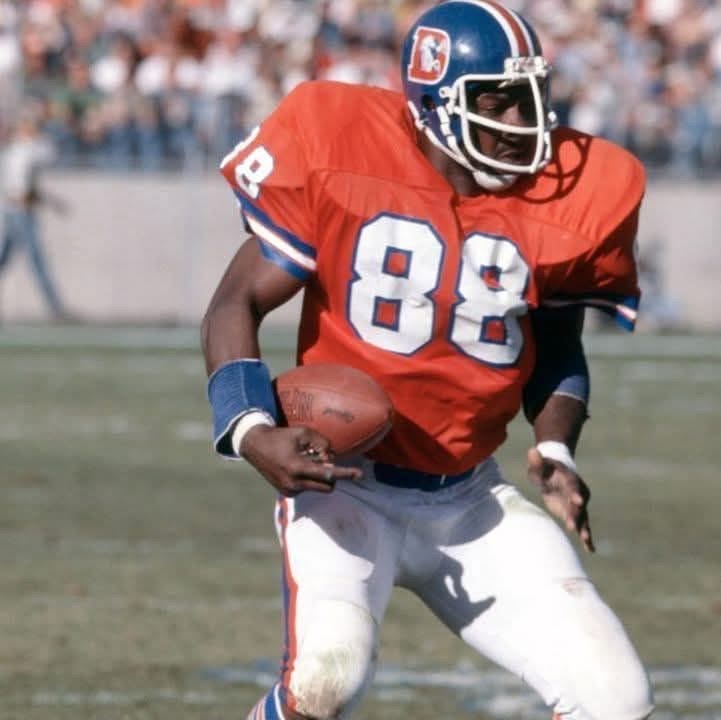Remembering a legend! Riley Odoms, an incredible tight end, dedicated his entire NFL career to the Denver Broncos. Drafted fifth overall in the 1972 NFL Draft, he tied with Mike Ditka for the highest-drafted tight end ever—a record that stood for a whopping 49 years until Kyle Pitts was selected fourth overall in 2021, A four-time Pro Bowl selectee and a three-time All-Pro, Odoms left an indelible mark on the field. He wrapped up his outstanding career with 396 receptions, 5,755 yards, and 41 touchdowns, Credit: Keith Burgess………Read more
In the rich tapestry of NFL history, some players are remembered not only for their talent but for the legacy they leave behind. Riley Odoms is one such legend—a trailblazing tight end who dedicated his entire professional football career to the Denver Broncos. Drafted fifth overall in the 1972 NFL Draft, Odoms wasn’t just another first-round pick. His selection tied him with the great Mike Ditka as the highest-drafted tight end in league history, a record that remarkably stood unchallenged for nearly half a century. It wasn’t until 2021, when the Atlanta Falcons selected Kyle Pitts fourth overall, that Odoms and Ditka’s record was finally surpassed.
Odoms’ selection came at a time when tight ends were primarily seen as blockers, not dynamic offensive threats. But Odoms broke the mold. His combination of size, speed, and hands made him a matchup nightmare for opposing defenses. From his rookie year, it was evident that he would be a cornerstone of the Broncos’ offense. Over his ten-year career, he developed a reputation for clutch catches, physical dominance, and a work ethic that set the tone in the locker room. His impact was immediate and enduring, helping to reshape the role of the tight end in modern football.
Throughout his career, Odoms was selected to the Pro Bowl four times, reflecting not only his individual brilliance but his consistent production. His three All-Pro selections further highlight how respected he was by coaches, players, and the media alike. These accolades weren’t just ceremonial; they were earned on the field through his ability to perform in high-stakes situations and deliver when his team needed him most. Odoms had a knack for making the tough catches over the middle, often absorbing big hits while moving the chains or scoring critical touchdowns.
Statistically, Odoms’ career numbers still hold weight in today’s game. He retired with 396 receptions, 5,755 receiving yards, and 41 touchdowns—numbers that were exceptional for a tight end in his era. It’s important to recognize that these achievements came during a time when the NFL was far more run-heavy and passing attacks weren’t as prolific as they are today. For a tight end to rack up those kinds of numbers during the 1970s and early 1980s speaks volumes about his talent and role in the Broncos’ offense. His production paved the way for future generations of tight ends who would become focal points of their teams’ passing games.
Beyond the stats and accolades, Odoms’ leadership and presence were invaluable to the Broncos organization. He was a quiet force—never one to seek the spotlight, but always ready to let his play do the talking. Coaches praised his professionalism, teammates admired his dedication, and fans revered his toughness and consistency. His loyalty to the Broncos, spending his entire career with the team, only deepened his bond with the Mile High faithful. Decades after his retirement, Odoms remains a beloved figure among Denver fans who remember his contributions fondly.
Riley Odoms may not always get the national spotlight he deserves, but his legacy is undeniable. He helped revolutionize the tight end position, becoming a prototype for the modern pass-catching, all-around tight end. From his historic draft selection to his Pro Bowl and All-Pro honors, and his steady excellence on the field, Odoms’ name deserves to be mentioned among the greats. As we look back on the career of this Denver Broncos icon, we remember a player who gave everything to the game—and in doing so, left an indelible mark on it. **Credit: Keith Burgess**

